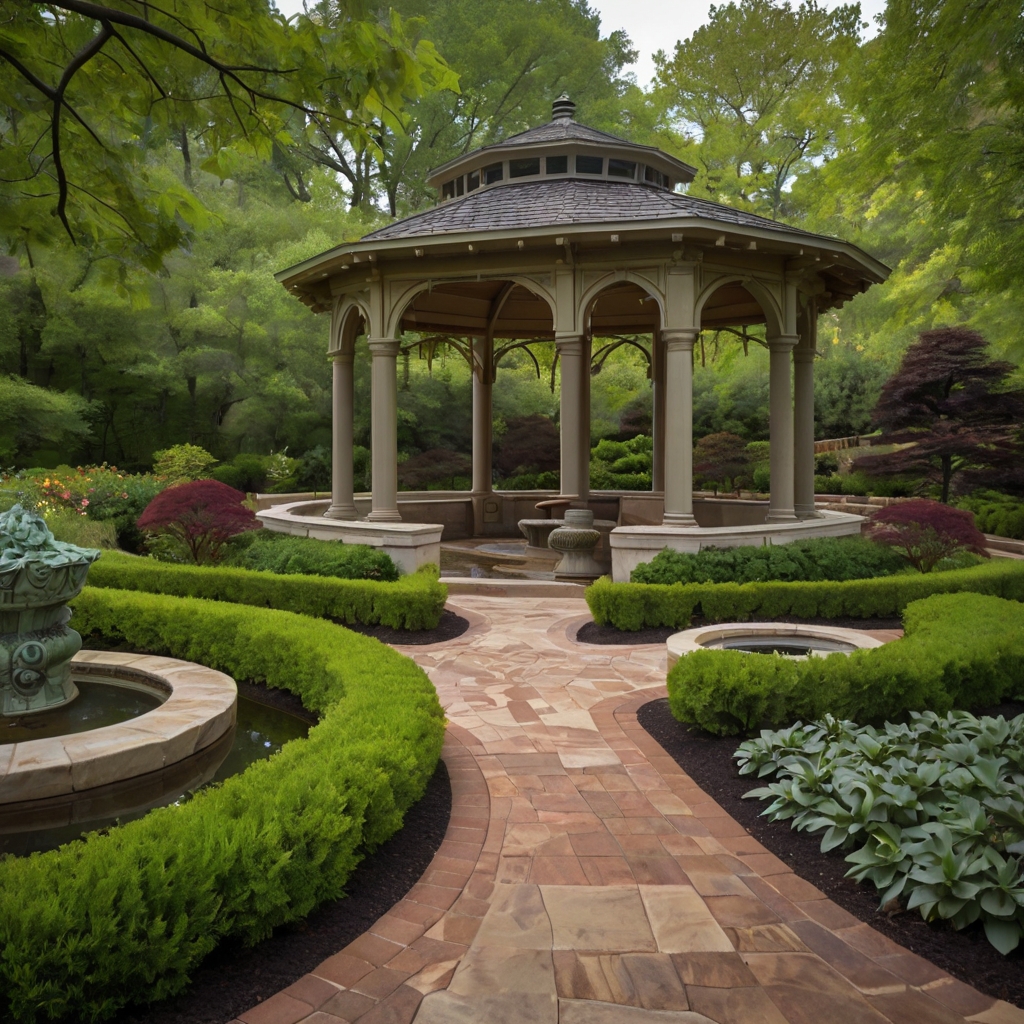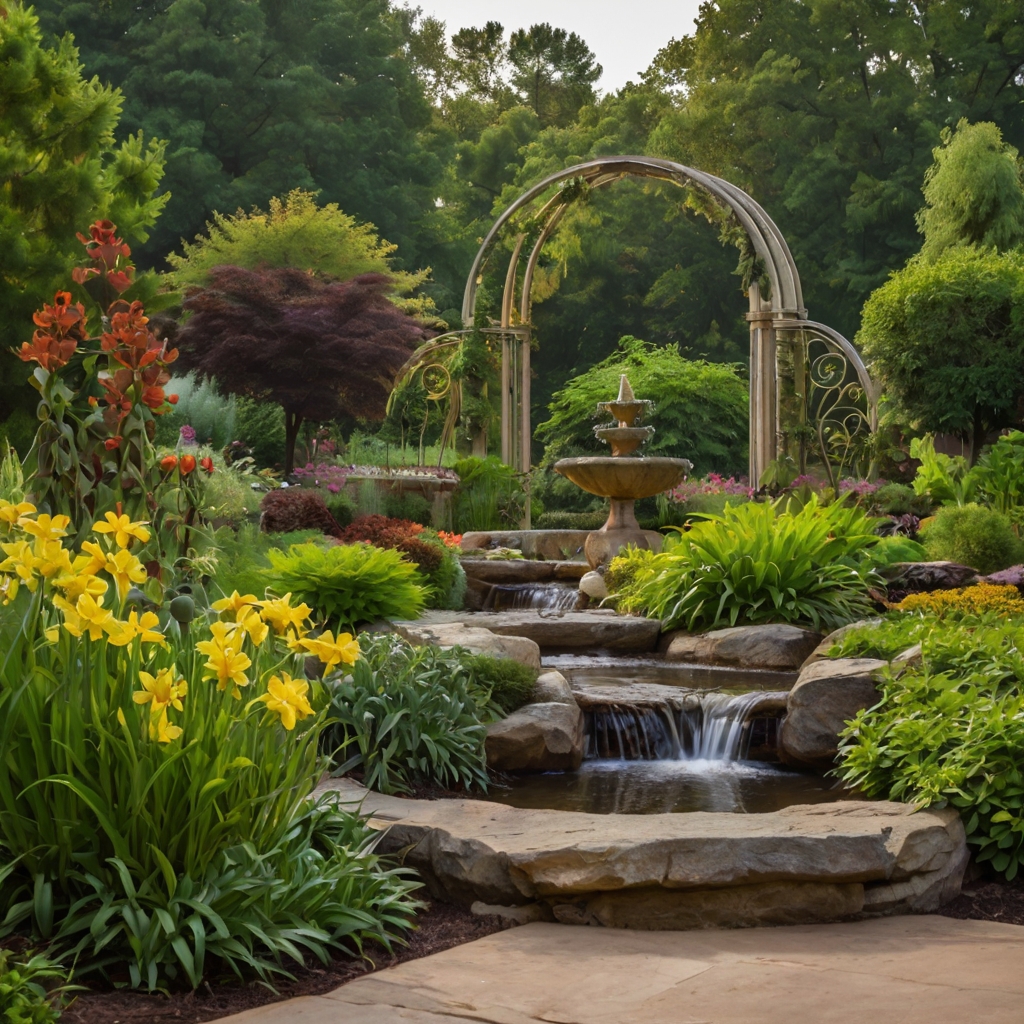A Spotlight on Missouri Botanical Garden
Exploring the Beauty and Legacy of Common Botanical Gardens:
Botanical gardens serve as living museums of plant life, dedicated to the conservation, education, and enjoyment of flora from around the world. These meticulously maintained gardens attract nature lovers, researchers, and tourists alike, offering a blend of aesthetic beauty, scientific research, and cultural heritage. Among the most renowned botanical gardens in the world, the Missouri Botanical Garden stands as a beacon of botanical excellence and historical significance.
An Overview of the Missouri Botanical Garden

Founding and Historical Background
Established in 1859 by Henry Shaw, the Missouri Botanical Garden (MBG) is one of the oldest botanical institutions in the United States. Located in St. Louis, Missouri, the garden has grown to become a world-class research center and a National Historic Landmark, preserving the vision of its founder, who aimed to create a public garden dedicated to botanical education and conservation.
Location and Climate
Situated in St. Louis, Missouri, the Missouri Botanical Garden enjoys a humid continental climate, characterized by hot summers and cold winters. This climatic variation influences the types of plant species cultivated, allowing for a diverse range of flora adapted to both temperate and subtropical conditions.
Heritage and Conservation Efforts
The garden holds a significant heritage status and is recognized as a National Historic Landmark. MBG is also a leading institution in global conservation, playing a crucial role in protecting endangered plant species, promoting sustainable gardening practices, and contributing to ecological research worldwide.
Flora and Botanical Collections
One of the defining features of any botanical garden is its plant collection, and the Missouri Botanical Garden boasts over 51,000 living plants, representing more than 14,000 species. Some notable plant collections include:
- Climatron® Conservatory: A geodesic dome housing a tropical rainforest ecosystem with rare orchids, palms, and ferns.
- Japanese Garden: Spanning 14 acres, this serene landscape features cherry blossoms, koi ponds, and traditional Japanese architecture.
- Victorian District and Linnean House: A historic greenhouse with tropical plants and one of the oldest continuously operated greenhouses in North America.
- Temperate House: A vast collection of Mediterranean and temperate flora from around the world.
- Sensory Garden: Designed to engage visitors through touch, scent, and sound, particularly for individuals with visual impairments.
Architecture and Infrastructure
The Missouri Botanical Garden seamlessly blends historical and modern architectural elements. Some of its most remarkable structures include:
- Climatron® Geodesic Dome: Designed by architect R. Buckminster Fuller, this cutting-edge greenhouse was built in 1960 and remains an iconic symbol of the garden.
- Tower Grove House: The historic home of Henry Shaw, which now serves as a museum showcasing the garden’s history.
- Shoenberg Temperate House: A striking glass conservatory housing plants from five different Mediterranean-climate regions.
- Stephen and Peter Sachs Museum: A historical building featuring exhibits on botany, art, and garden history.
Facilities and Visitor Amenities
To enhance the experience for visitors, MBG provides a range of modern facilities, including:
- Education and Research Centers: Housing extensive botanical research initiatives and educational programs.
- Gift Shops and Cafés: Offering books, gardening tools, and refreshments.
- Walking Trails and Green Spaces: Designed for relaxation and recreation.
- Event Venues: Spaces available for weddings, corporate events, and community gatherings.
Annual Events and Activities
Throughout the year, the Missouri Botanical Garden hosts a variety of events that attract thousands of visitors. Some major annual events include:
- Garden Glow (Winter Festival): A mesmerizing display of lights transforming the garden into a magical winter wonderland.
- Japanese Festival (September): A celebration of Japanese culture, featuring traditional performances, tea ceremonies, and arts.
- Orchid Show (Spring): Showcasing rare and exotic orchid species from around the world.
- Whitaker Music Festival (Summer): A series of outdoor concerts held in the picturesque garden setting.
Management and Governance
The Missouri Botanical Garden is managed by a dedicated team of professionals, including:
- Executive Leadership: Led by a President and CEO overseeing strategic planning and operations.
- Horticultural Staff: Expert botanists and gardeners responsible for plant care and garden maintenance.
- Research Scientists: Conducting botanical studies and conservation projects.
- Volunteers and Educators: Assisting in community engagement, tours, and educational programs.
Annual Visitors and Community Impact
As a top tourist attraction, the Missouri Botanical Garden welcomes approximately one million visitors annually. Beyond tourism, it plays a significant role in community outreach, offering educational programs for schools, workshops for gardening enthusiasts, and conservation initiatives that extend globally.

Botanical gardens like the Missouri Botanical Garden are not just places of beauty but also centers for conservation, education, and cultural heritage. As one of the most significant botanical institutions in the world, MBG continues to inspire visitors with its rich history, diverse plant collections, and commitment to sustainability. Whether you are a botanist, a student, or a nature lover, visiting a botanical garden offers an enriching experience that deepens one’s appreciation for the natural world.
